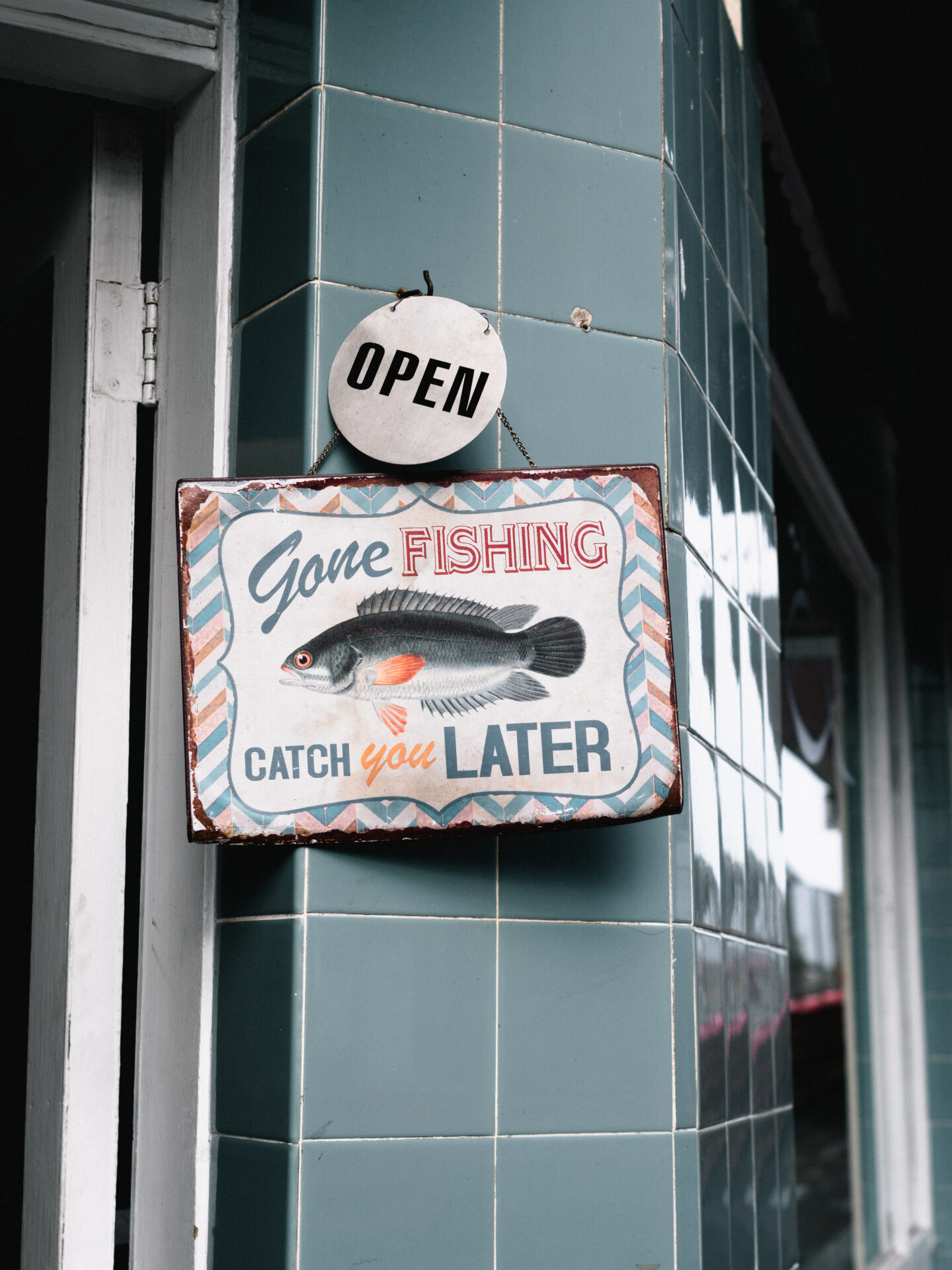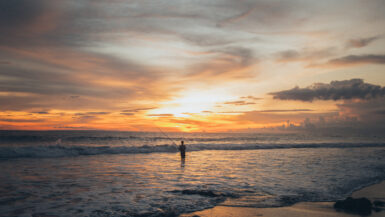Fishing for bass in the fall can be one of the most rewarding experiences a fisherman can have. With the changing of the seasons comes the opportunity to target the game fish of a lifetime. From the changing water temperature to the food sources present in the water, understanding how to maximize your time on the water is essential for any bass angler. In this article, we will take a deeper look in to fishing for bass in the fall and help you understand the best techniques for hauling in that trophy-winning catch.
Equipment Preparation
Fishing for bass in the fall requires the right equipment to ensure success. Make sure you have the necessary gear, such as a light- to medium-action rod and reel, line suitable for bass fishing in the fall, and an assortment of soft plastic lures. Common lures include topwater plugs, crankbaits, spinnerbaits, and soft plastics like worms and jigs. Depending on the type of water you plan to fish and the size of the bass you’re aiming for, it may be beneficial to include live bait as well.
Test Your Fishing Gear
Before you head out, take some time to test your gear to make sure it is in good condition and working properly. Check the line on your reel for any knots, fraying, or otherwise damaged areas. Make sure the line has the proper tension and test the resistance of your rod to ensure it is not too stiff or too flimsy. Test out your lures to ensure they function properly and check the hooks to make sure they are sharp.
Pack Essential Items
In addition to your rod and reel, you will want to bring along other necessary fishing items, such as a tackle box, spare line, pliers, a net, and a pair of polarized sunglasses. Also, make sure you are adequately dressed for the weather and pack things such as sunscreen, bug spray, and a hat for sun protection. Don’t forget to bring a cooler for storing your catch and beverages.
Choose a Fishing Location
When selecting where you will fish for bass, there are many factors to consider. Look for areas with cover such as rocks, logs, and weed beds, as bass tend to hang out in these areas. Also, try to find areas with an abundance of baitfish as bass will naturally gravitate towards these spots. When you have chosen a potential fishing spot, it’s best to cast your line a few times to see if you can draw any strikes.
Set Up Your Fishing Area
Once you’ve chosen your fishing spot, set up the area accordingly. Make sure your rods and reels are ready to go and your lures are positioned in the water. If you’re using live bait, be sure to have it prepped and ready. Once everything is in place, relax and enjoy the day of bass fishing.
Locating the Fish
Fall months are prime time for bass fishing, as the cold weather and shorter days trigger bass to prepare for colder weather. Finding the best spot to catch a fish can be challenging, but there are a few things you can do to increase your chances of success.
Research
Before heading out, consult fishing reports and do research on the particular body of water you plan to fish. You should also check out any nearby lakes or rivers and determine which one is likely to be most productive.
Plan Out an Area
Decide where you want to fish and outline a plan of action. Identify points and areas likely to hold fish, such as underwater structure like fallen logs and rocky outcroppings. Also look for visible signs of bass, such as baitfish or surface activity, which can be indicators of bass being present.
Adjust Your Tactics
Your fishing tactics should also be adjusted depending on the water temperature and the season. In the fall, bass will be more inclined to move to deeper water, so adjust the depth of your lures to the appropriate range. Bass will also become more inactive in the colder months, so use a slower presentation when casting lures.
Have Patience
Fishing in the fall can be a great time to catch bass, but it can also be a test of patience. Don’t be discouraged if you don’t immediately start catching fish; adjust your approach and focus on areas with high concentrations of bass and baitfish. If you put in the extra effort, you will be rewarded with a fun, successful fishing trip.
Fishing Techniques
Fall is a great time to target bass, due to the fish’s feeding habits during the season. The three most common types of bass fishing techniques used in the fall are jigging, crankbaiting, and flipping. Each technique has its advantages, so understanding them can help you determine which one is best for the waters you’re fishing in.
Jigging for Bass in the Fall
Jigging is a great option for targeting bass in the fall because it allows anglers to cover a large area quickly. Jigs come in many shapes and sizes, which makes them highly versatile. Jigs can be cast, skipped, or pitched into large or small openings. They can also be bounced over deep structure or fished vertically along the bottom of the lake.
Crankbaiting for Bass in the Fall
Crankbaiting is a great option for targeting bass in the fall due to their active feeding habits. Crankbaits allow anglers to cover a large area quickly and accurately, while triggering aggressive strikes from hungry bass. Crankbaits are available in many different shapes, sizes, and colors, making it easy to find one that matches the conditions you’re fishing in.
Flipping for Bass in the Fall
Flipping is a great option for targeting bass in the fall due to its accuracy and versatility. Flipping involves casting a jig or plastic bait into areas that bass are likely to be hiding, such as thick cover, brush piles, and fallen trees. By flipping into these areas, anglers can target the bass hiding in them and draw out aggressive strikes.
Proper Equipment for Fall Bass Fishing
For all of these techniques, the proper equipment is key. Make sure you have the right rod, reel, and line for the type of fishing you’re doing. Knowing the proper technique to use for different baits, along with the skill to cast and retrieve each one, is also important.
Tips for Successful Fall Bass Fishing
When fishing for bass in the fall, pay close attention to water temperature, clarity, and movement. Look for areas that have an abundance of baitfish, as these tend to be prime areas for bass to feed. Lastly, be patient and persistent—bass can be picky and it may take a while to find the right lure to trigger their strikes.
Baits to Use
When fishing for bass in the Fall, it is important to consider the location of the lake or river you plan to fish. Bass tend to gather in areas with warmer water temperatures and more oxygen-rich waters. Look for warmer areas in a lake or river that have different depths and are sheltered from cold winds. These areas are ideal for bass fishing.
Seasonal Patterns for Lures
In the Fall, bass tend to move towards shallow water, as the weather cools. Fishing with lures that can replicate baitfish can be effective for catching bass. You can also use jigging or slow trolling with minnows, worms, and other live bait.
Best Baits for Catching Bass
Crankbaits are great for catching bass in the Fall. These lures work best in shallow to moderate depths, and imitate a fleeing baitfish. Use vivid colors and rattles to draw bass in, as they can be lured in by the sound and sight of the lure.
Plastic worms are also an effective bait for bass. These soft-plastic baits can be used in any water depth and can be used in a variety of ways, such as rigged onto a jig head or Texas-rigged on a hook.
Spinnerbaits are excellent baits for both shallow water and deep water. These lures have an attached blade that vibrates and spins, creating noise in the water. These vibrations mimic the sound of a baitfish and draw bass in.
Finally, topwater lures are great for targeting bass in shallow waters. These lures rise to the surface, imitating small baitfish. Topwater lures are good for fishing during twilight hours, as bass are more active at this time.
Overall, the best bait for bass in the Fall will depend on the area where you are fishing. Experiment with different lures and methods to find out what works best for your location.
Dealing With Inclement Weather
Fall is a great time to go fishing for bass, but it can also be very wet and cold. Knowing how to stay warm and dry while fishing in the fall can be the difference between a successful outing and a miserable one. Be sure to dress in layers and wear waterproof clothing to protect yourself from the weather. Choose items made of materials that will keep you dry, like Gore-Tex, nylon, and polyester. You may also want to bring an umbrella (or two) to keep you and your equipment dry.
Types Of RainGear For Bass Fishing
When it comes to finding the right rain gear for fishing, you have many options. One piece of rain gear that is essential for bass fishing is a waterproof fishing jacket. Look for a jacket made of waterproof material, preferably one that is breathable and lightweight. You may also want to bring a waterproof hat and gloves, as well as waders or rain pants. Make sure your rain gear fits properly so you can stay comfortable while fishing.
Useful Fishing Gear For Poor Weather Conditions
When fishing in inclement weather, it is important to bring the right equipment. Bring a small tarp or two for extra coverage in case of wind or rain. If it is windy, it might also be a good idea to bring extra weights so that your baits don’t drift away. You may also want to bring an extra fishing rod in case one breaks due to the weather. Make sure you have the right gear and supplies in case the weather turns against you.
Preparing For The Worst
Preparing for the worst is always a smart move when fishing in the fall. Check the weather forecast before you go out and make sure that you are prepared for whatever conditions you may encounter. Bring plenty of water, sunscreen, and a first aid kit in case of an emergency. You should also bring a few extra towels and dry clothes in case you get wet.
Safety Tips When Fishing in Inclement Weather
Fishing in inclement weather can be dangerous, so it is important to take safety precautions. Don’t fish alone and avoid areas with rough waters. Make sure you have a life jacket and always wear it when fishing in bad weather. Be aware of your surroundings and listen for thunder or other signs of an approaching storm. If you do get caught in bad weather, head for shore immediately and take shelter in your vehicle or a nearby building.
Knowing the Benefits of Fall Fishing
Fishing for bass in the fall can be an incredibly rewarding experience. The cooler temperatures and increased food sources make it a great time for bass to feed and for anglers to take advantage of the larger catches. Knowing when and where to target bass during this season can give anglers a better shot at success. It is important to consider the water temperatures and search for areas with the most cover, such as fallen trees and logs, docks, and submerged weeds. Baits such as spinnerbaits, crankbaits, and jigs will help lure in the bass and bring in a successful catch. With the right knowledge and tackle, anglers can have a great fall fishing experience and take advantage of the benefits the season has to offer.





Leave a reply